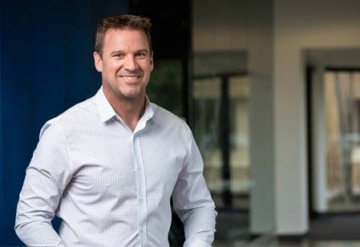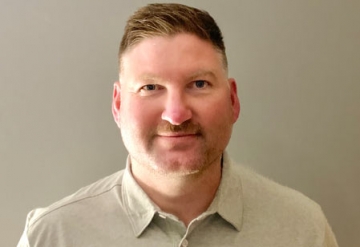THANK YOU FOR SUBSCRIBING

5 Tips for the Successful Hiring of Safety Professionals
Reid C. Lenhart, CSP, Safety Director, Concrete Strategies

 Reid C. Lenhart, CSP, Safety Director, Concrete Strategies
Reid C. Lenhart, CSP, Safety Director, Concrete StrategiesArguably the hiring of a safety professional is as important, if not more important, than the actual policies and procedures that an organization creates. Employing safety professionals breathes life into the regulations that are set in place by the company. A safety professional provides the entity with the education and working application and ultimately reinforces the directives found in the safety manual.
1.) Identify the Need, Don’t Just Fill the Opening Hiring managers need to take a reflective approach before reviewing a single resume and ask themselves, “What are we trying to accomplish as an organization by hiring a safety professional?” Not all organizations are built the same or have the same needs. It is important, to be honest with yourself as a hiring manager of where your organization is at on their safety journey. Safety professionals can continue to maintain and grow your company’s current direction, or they can be agents of change for your organization and can blaze a new trail.
2.) Recognize the Qualities of Your Ideal Candidate Take the time to make a short list of the criteria you believe the ideal candidate should possess to succeed in your organization. Most hiring managers start the screening process and set up interviews based on measurable benchmarks: years of experience; industries served in educational background, and certifications. Though this is a good starting point, the richer content that truly benefits the organization’s members can be found between the lines of a resume. In a March 2023 study conducted by Safety + Health, communication, listening, and teamwork/collaboration were the top three soft skills identified as needed by a safety professional to be successful (Ferguson, 2023).
Safety professionals undoubtedly will be tasked with navigating challenging situations from the field to the boardroom, where those invaluable soft skills will pay dividends to the movement of an organization’s culture in a positive direction.
3.) Conduct Interviews with a Colleague in Attendance
It is rare that lightning will strike twice when hiring. Having a candidate with a similar pedigree to a successful current employee sometimes equates to different outcomes. This is where situational questions allow the candidate to illustrate their professional competency and exemplify the desired soft skills for the role.
In the interview, having another manager be a part of the conversation and provide feedback is beneficial. You may be surprised by how your colleague interprets the candidate’s responses and their fit for the role within the entity.
4.) Situational Questions Provide Clarity of Candidate Strength
Asking multipart questions elevates the conversation in a way that the stronger candidates tend to shine through. A challenging question to ask is, “Describe a time when you walked upon a non-compliant situation; what was the situation, what were the conversations had, and what was the ultimate outcome?” Ask about instances when the candidate has held people accountable in the past. Inquire further about the candidate and their fit within your current program. Ask about how the candidate learns successfully, what ideal qualities they would like to see in their next supervisor, and how they define their leadership style. These questions aim to validate if the individual’s experience and skills align with the needs of the role you are trying to fill and the organization’s future course.
5.) Be the Hiring Manager You Would Want to Work For Once you have a better understanding of the composition of the candidate from your conversation and believe that they are a viable candidate, it is time to flip the script. Shouldn’t you provide the same in an interview if you ask for transparency from your supervisors and direct reports? During an interview is a prime opportunity to discuss the pros and cons of the role and the organization.
By providing the additional insight, a candidate is afforded the information to aid in making a sound decision on their end if offered the position. A career move affects a person in a multitude of ways, and providing a sense of affirmation to a prospective employee tends to result in a positive transition into the new role and overall retention.
“A career move affects a person in a multitude of ways, and providing a sense of affirmation to a prospective employee tends to result in a positive transition into the new role and overall retention”
As a hiring manager, you never knowingly want to set the organization or a candidate up for failure. Hiring is not only time-consuming but also an expensive process and a failed hire is a setback on multiple fronts. It is important to remember the adage of trusting your gut. Just because a candidate appears strong on paper, and is average in the interview process, do not force the fit if it doesn’t feel right. If you believe the candidate had nerves that showed through the interview that left you uncertain of making an offer, take the time for a second interview. If you have follow-up questions after the interview that you would like answers to, ask. Before making an offer ask yourself, “If I hire this individual, will I be able to trust them to keep our team members safe and operate with integrity to represent our company at all times?”
Read Also
Development of the Logistics Warehousing Market in Brazil
Driving Innovation and Preserving Tradition
Operational Leadership VS Field Leadership in the Utility Construction Business
People-First Innovation: Developing Virtual Design and Construction (VDC) Training Programs to Empower Field Team Members
Sustainable Projects: Aligning Business and Purpose in Latin America
Engage Smarter: Why Constraints Matter More Than Hazards

 Copyright © 2025 All Rights Reserved | by:
Copyright © 2025 All Rights Reserved | by: Construction Tech Review
| Subscribe | About us | Sitemap| Editorial Policy| Feedback Policy













